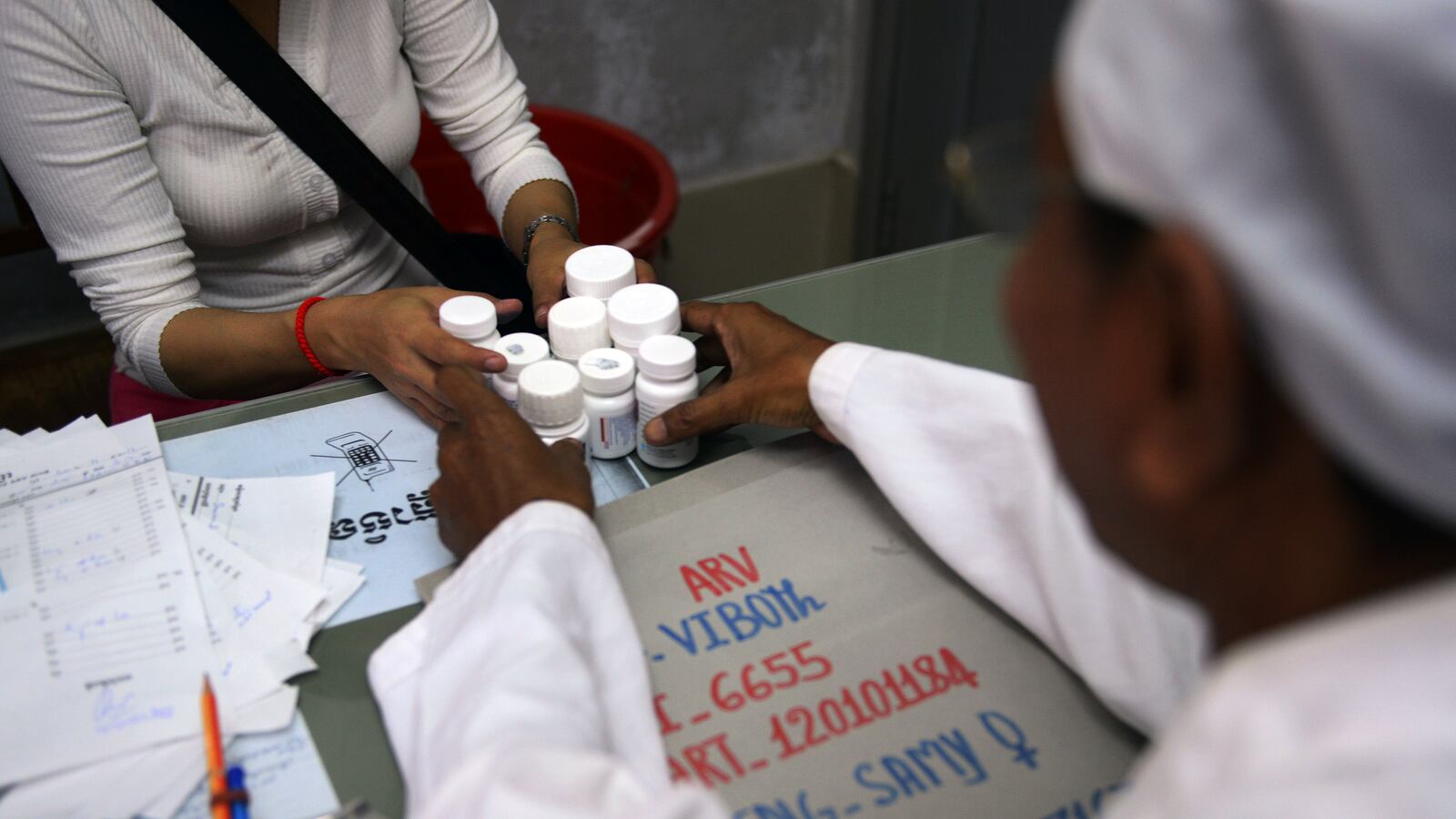“Do we scale up effective intervention now and see a payoff in the next few years, or squander that opportunity?” That’s the rhetorical question Chris Collins, vice president and director for Public Policy at the HIV/Aids treatment advocacy group AMFAR, raised to the Daily Beast in reference to the State Department’s blueprint for global HIV/AIDS treatment Vice President and Director, Public Policy (PDF) But he could have very well been talking about the gamut of HIV/AIDS funding, some $16.8 billion a year.
World AIDS Day is an appropriate time to look at the allocation of funds to HIV/AIDS prevention, services, and treatment. And the global drive for austerity in developed economies, combined with sharp arguments about U.S. government spending, points to potential difficulties.
According to the Kaiser Family Foundation, donor funding for poor and middle income nations (PDF) amounted to $7.6 billion in 2011, which is roughly the same level as it was in 2008. That follows a six-fold increase from 2002 to 2008. In 2011, more than half of that money came from the United States with the United Kingdom and France rounding out the top three. According to the U.N. (PDF), 60 percent of all people living with HIV are in sub-Saharan Africa and international donations account for some two-thirds of all funding for HIV/AIDS in Africa.
The United States’ efforts to combat HIV/AIDS are spread across treatment, prevention and services for those affected both at home and abroad. U.S. global anti-AIDS efforts were vastly expanded in the Bush administration under U.S. President’s Emergency Plan for AIDS Relief, or PEPFAR, which provided for a Ambassadorial-level official in charge of global AIDS coordination and now works in 58 countries. All told, in the 2012 fiscal year, the U.S. government spent $27.7 billion on HIV/AIDS, with more than $21 billion spent domestically. The president’s fiscal year 2013 budget request envisions a 2.8 percent increase in the total AIDS budget, up to $28.4 billion.
However, even current funding, let alone planned funding growth, is endangered by the sequester, the mandated reduction in government spending that could phase in starting January 1, 2013. This is the non-taxation portion of the so-called “Fiscal Cliff” and totals some $109 billion in 2013 (PDF). The sequester implies an 8.2 percent across the board cut for discretionary spending programs that weren’t specifically carved out. The cuts would only go into full effect if the sequester were enacted for the entire year and no effort was made to reverse them. And there is some possibility that individual agencies would have discretion to distribute the cuts among programs. But Chris Collins of AMFAR explains that it’s essentially impossible to usefully project how this ad-hoc budget and time-shifting would work.
When his organization prepared estimates for how HIV/AIDS programs would be affected by sequestration, it applied the 8.2 percent cut to the non-administrative program costs and then figured how many units for each program (say, HIV/AIDS drug treatments) would be lost compared to the 2012 funding levels. For example, AMFAR found that the domestic HIV/AIDS budget would be cut by just under $660 million should the sequester go fully into effect. AMFAR estimates that funding for 15,700 people to participate in the AIDS Drug Assistance Program, which provides medication to low income people with HIV/AIDS. Five thousand households would lose short and long-term assistance provided through Housing Opportunities for Persons with AIDS Program (HOPWA), which provides housing and social services to HIV/AIDS patients.
A large chunk of health care services—and $13.6 billion of the $21.3 billion of the federal government’s 2012 AIDS spending — for HIV/AIDS patients is provided through mandatory spending programs, like Medicare, Medicaid, Social Security and Disability Insurance and is largely protected from the sequester.
One of the biggest shifts in domestic HIV/AIDS treatment, Collins explained, is the Medicaid expansion that’s part of the health care reform law. Today, even with the Medicaid expansion planned under health care reform yet to take effect until 2014, Medicaid is the country’s biggest payer for HIV treatment. According to the Kaiser Foundation (PDF), the expanded Medicaid eligibility will substantially increase access and affordability of HIV/AIDS treatment. However, Collins cautions, “Critical other aids will see significant cuts under sequestration. That will undermine domestic response.” All the federal government’s domestic HIV/AIDS programs, Collins explained, work in a mosaic. “People living with HIV can’t take advantage of care through Medicare or Medicaid if they don’t have a house or other supports in their lives. You need package of services through appropriated programs”
AMFAR also found that, applying the 8.2 percent across-the-board cut to global AIDS prevention would result in cuts of U.S. donations of $689 million. That could lead to a reduction of 276,500 people retrieving treatment compared to the 2012 levels. Between 2008 and today, according to the State Department, the number of HIV/AIDS patients treated with antiretroviral drugs grew from 1.7 million to 5.1 million. About a third if PEPFAR is devoted to treatment of HIV/AIDS. Another big segment of PEPFAR, about 12 percent of the program, is devoted to preventing HIV transmission from pregnant women to their newborns. In 2012, nearly 750,000 pregnant women received treatment to prevent transmission to their children. AMFAR estimates that under the sequester, 112,500 women who would otherwise have access to preventive treatment would not receive it; that could lead to 21,000 more infected infants.
In a presidential proclamation for World AIDS day, President Obama said “We also recommit to preventing the spread of this disease, fighting the stigma associated with infection, and ending this pandemic once and for all.” That’s a commitment that could, in just a month, start to fall off a cliff. .







